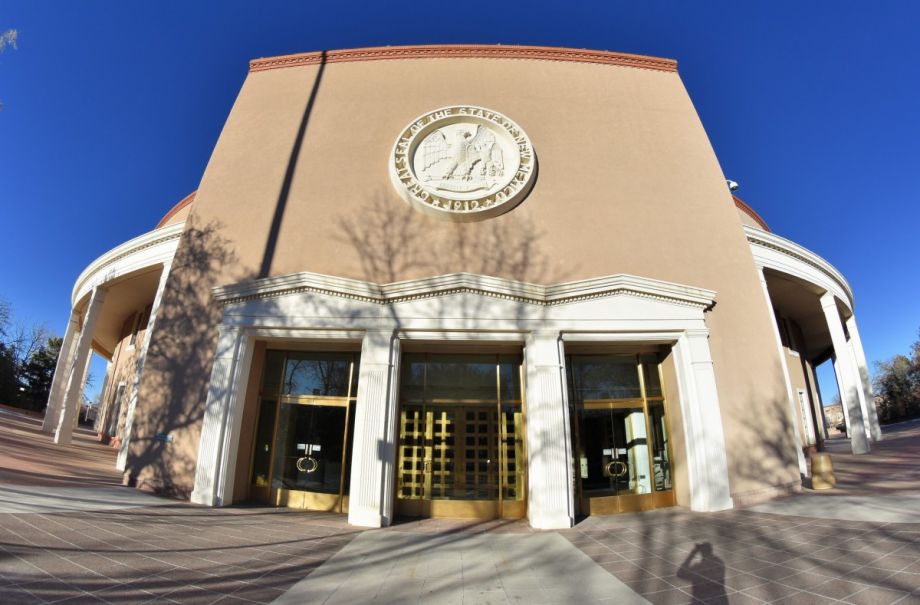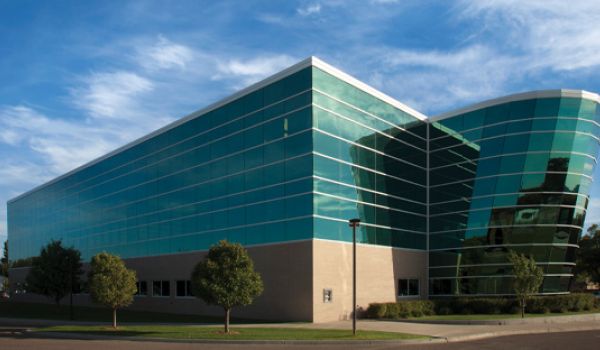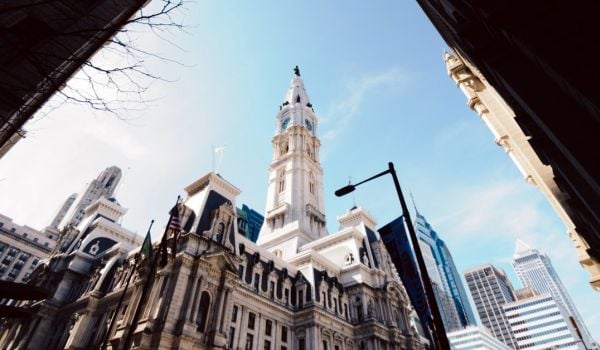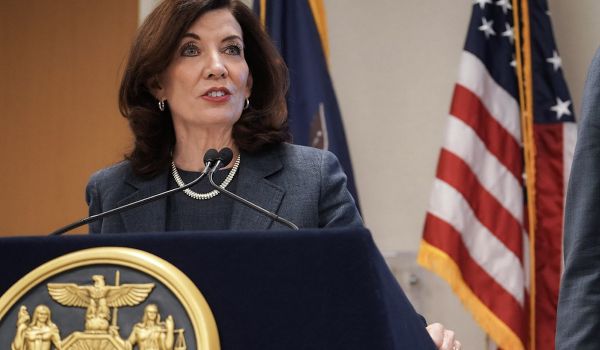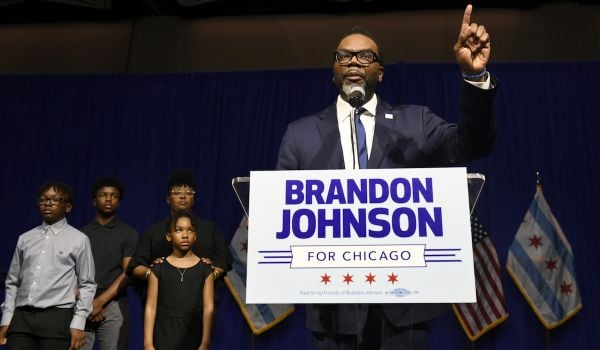Editor’s note: See this and a half-dozen more stories like it, about the potential of public banking, in our new, pay-what-you-wish ebook.
Like many banking executives, Harold Dixon wasn’t sure at first about the idea of a state government owning its own bank. His knee-jerk reaction was skepticism that a state government could run a bank, because state employees don’t really have experience doing that.
And he would know that better than just about anyone in New Mexico. Dixon is CEO of the State Employees Credit Union of New Mexico, with 49,000 members. Only state employees could become members until 2016, when the credit union expanded its membership eligibility.
“But once I wrapped my head around it — and once it was clear they’re not taking your customers away, they’re just to help supplement what you already do and be another avenue to help you loan more money out in the community, it made a lot of sense,” Dixon says.
Having a state-owned bank around would really help his credit union with small business lending, Dixon says. It’s not something his credit union has been doing for very long. “About six or seven years ago, we started to see a niche doing more commercial lending,” Dixon says. “Local banks were getting bought up by regional or national banks, losing touch with local businesses.”
But since 1998, credit unions have been subject to a cap on business loans to their members — with certain exceptions, business loans to members can’t be more than 12.25 percent of a credit union’s total assets, a result of banking industry lobbyists trying to stave off competition. With around 140 business loans totaling nearly $80 million to its members, and $818 million in total assets, State Employees Credit Union of New Mexico is already approaching that limit.
One way a state-owned bank could help in this situation would be by purchasing a portion of each of those business loans, taking some of the outstanding loan value off the credit union’s books in exchange for a portion of the loan repayments as they come in. It’s known as a loan participation, and it’s not out of the ordinary for banks to purchase participations from each other. The local bank or credit union would originate the loan, and it would sell the participation to the state-owned bank.
Dixon eventually served on a committee, convened by the statewide Alliance for Local Economic Prosperity, which helped design legislation for a state-owned bank in New Mexico. The state-owned bank would start out with a small portion of the state government’s deposits currently held at a large commercial bank. Purchasing loan participations from credit unions and community banks around the state would be a big part of its business model.
That legislation was introduced into the New Mexico state house and senate earlier this year, where it received approval from one house committee but stalled in another. Some of the reason for that stalling out was questions raised about the proposed bank that can’t quite be answered at the state level. Those questions would require action at the federal level, actions that happen to be at the heart of the Public Banking Act, introduced in the U.S. House of Representatives last year.
If passed, the Public Banking Act would smooth out the road ahead not just for New Mexico but in all of the dozens of states and municipalities where legislators are exploring state- or municipally-owned banks.
“It seemed like it was a good opportunity to keep money local and lend back out into the economy here, a source of money to help supplement community banks and credit unions,” says Dixon, who is also board chair of the Credit Union Association of New Mexico. “We’re taking money that would otherwise get invested on Wall Street and bringing it back to New Mexico and investing it here.”
New Mexico’s state government deposit situation is typical of most other states and many local governments. It does hold some deposits at a number of homegrown banks, but the vast majority of its deposits are now with very large, global institutions.
According to New Mexico’s most recent available audit, across the hundreds of bank accounts it controls, the state treasurer held $1.1 billion in bank accounts at 31 institutions. Most of those institutions are based in New Mexico, but a majority of the actual deposits — $601 million — were held at Bank of the West, whose corporate headquarters is technically in San Francisco, though it is currently a subsidiary of BNP Paribas, based in Paris, France. Spain’s BBVA held the next largest amount of New Mexico state government deposits, $274 million. Wells Fargo came in third, with $156 million.
In addition, JPMorgan Chase was also managing another $612 million in very short-term investments on behalf of the New Mexico State Treasurer’s Office, according to the same audit.
“This bill would simply be adding a new state-owned bank to the allocations the state treasurer makes,” says Angela Merkert, executive director at the Alliance for Local Economic Prosperity. “It becomes another option like all the other options.”
Merkert and other advocates have been looking into doing something like this for at least a decade, longer in some individual cases. In 2011, she says, in response to the last financial crisis and as part of the Occupy Wall Street movement, a group of activists in Santa Fe started looking into creating a state-owned bank. Like many, they looked to the state-owned Bank of North Dakota for inspiration.
The Bank of North Dakota was founded in 1919 during a rare moment of socialist government in the otherwise conservative agricultural state. Farmers were tired of bankers out of state charging them usurious rates of interest. So they created a state-owned bank and they required their state government to deposit all of its revenues into that bank, which would leverage those deposits to support affordable loans for farming and other economic development purposes, including loans to local governments for building infrastructure.
Since its inception, the Bank of North Dakota was prohibited from competing with private banks, so it has never had branches and it doesn’t take deposits from anyone besides the state government. Nearly all of its lending is done through the purchasing of loan participations from local banks and credit unions around the state. It’s become a very profitable venture, returning over $1 billion in profits back to the state since inception, even while retaining enough net earnings to grow to what is now a $7.7 billion bank.
Merkert and others first proposed a municipally-owned bank with a similar model for Santa Fe. The city funded a feasibility study, which found that it would not be financially feasible for a city of around 84,000 people to start its own bank, but perhaps it could be done at the state level. The Alliance for Local Economic Prosperity emerged in 2019 when the Santa Fe group connected with others in Albuquerque and around the state came together to push for a state-owned bank in New Mexico.
To design the legislation, they didn’t just copy and paste from North Dakota. It has been over a century since that state created its bank, after all.
“We looked to North Dakota for how their staff … and overall office was structured, but we also realized they had started at a different time and place and we needed to develop this incrementally and not take all of the state’s deposits in one big gulp,” Merkert says. “We knew we needed to build trust in what the bank could do, so that was a part of what was addressed in the pro forma in terms of what we’d need for bank capital and initial deposits.”
The Alliance reached out to Reilly White, a professor at the University of New Mexico’s Anderson School of Management, who found three graduate students to create a pro forma showing how the bank would need to be capitalized and forecasting how long it would be before it became profitable. They worked in consultation with Dixon and other credit unions around the state to come up with a model for the bank.
Assuming an initial $50 million in initial state government deposits to leverage into commercial and agricultural loans, with more deposits from the state and also some local government entities coming in over time, the business school grad students modeled a bank that would be financially self-sustaining by its second year.
“This is a statewide entity that would immediately come online in a lot of ways, and our counterparts on the credit union side were very bullish,” says White. “We assumed bank representatives would be engaging populations, tailoring products to New Mexicans, who are very diverse.”
The credit needs are out there. Dixon’s credit union really only started doing small business loans in earnest less than a decade ago, and it’s already approaching its limits. He expects a number of smaller credit unions would be interested in getting into small business lending, if they had a state-owned bank on standby to help with loan participations or other behind the scenes support.
“I thought [having a state-owned bank as a lending partner] would be a great fit for smaller shops to get involved who maybe don’t have a full-time commercial lender on staff,” says Dixon.
But legislators’ concerns ultimately stalled the effort. They are summarized in a “Fiscal Impact Report” on the bill, produced by state legislative staff.
One of the big issues is liquidity — state governments tend to move large amounts of deposits into and out of accounts all at once, and this could be a long-term issue for a state-owned bank. The Bank of North Dakota deals with liquidity issues through its access to the Federal Reserve system and the Federal Home Loan Bank system. Like conventional banks, it has access to the Federal Reserve’s discount window to cover short-term liquidity needs. It also has access to the overnight deposit market of other banks.
But the North Dakota bank was basically grandfathered in to those systems. The Federal Reserve is only six years older than the Bank of North Dakota; the Federal Home Loan Bank system didn’t exist until 1932.
It is not clear yet whether the Federal Reserve would grant access to new state-owned or municipally-owned banks. But the Public Banking Act, introduced by Reps. Rashida Tlaib and Alexandria Ocasio-Cortez, would clarify once and for all how the Federal Reserve system would recognize and conduct business with banks owned by state or local units of government.
Another issue is deposit insurance. Once again the Bank of North Dakota is an historic oddball. Federal deposit insurance didn’t exist until 1933, so the state government itself has always guaranteed the bank’s deposits. It is not likely any state today would be willing to put itself in that position.
“The Bank of North Dakota is not the model that you would build based on the system we have today, there has to be some degree of federal oversight,” says Rohan Grey, a law professor at Willamette University College of Law, as well as founder and board chair of the Modern Money Network based at Columbia University.
Most state or local government-owned bank efforts today, including the California legislation passed in 2019 for municipally-owned banks, do require new government-owned banks to seek FDIC insurance, mostly as a measure to provide sufficient regulatory oversight. Federal regulators inspect banks’ books on a quarterly basis to ensure safe and sound lending, and state legislators in New Mexico and elsewhere agree on the need for that level of robust regulation for any bank that holds public deposits.
But state and local governments also usually hold deposits in bank accounts that often far exceed the FDIC’s limit of $250,000 per depositor, per bank. That’s why in most cases state and local governments require banks holding their deposits to provide matching collateral. In New Mexico it ranges from 50 cents to a dollar in collateral required per dollar of state government deposits. The Public Banking Act would eliminate the FDIC’s cap for deposit insurance for state or local government-owned banks, which would eliminate the need for collateral to match public deposits.
There’s a lot more also packed into the Public Banking Act, including authorization for seed funding to support new public banks and a federal public bank incubator program, as well as measures to support the return of postal banking — basic banking services offered through the U.S. Postal Service, which it did provide until not that long ago.
“It’s going to be really difficult to make public banks sustainable and competitive without more accommodating federal regulations,” says Grey. “A lot of those liquidity concerns are things that [Federal Reserve] access can obviate.”
This article is part of The Bottom Line, a series exploring scalable solutions for problems related to affordability, inclusive economic growth and access to capital. Click here to subscribe to our Bottom Line newsletter.

Oscar is Next City's senior economic justice correspondent. He previously served as Next City’s editor from 2018-2019, and was a Next City Equitable Cities Fellow from 2015-2016. Since 2011, Oscar has covered community development finance, community banking, impact investing, economic development, housing and more for media outlets such as Shelterforce, B Magazine, Impact Alpha and Fast Company.
Follow Oscar .(JavaScript must be enabled to view this email address)



